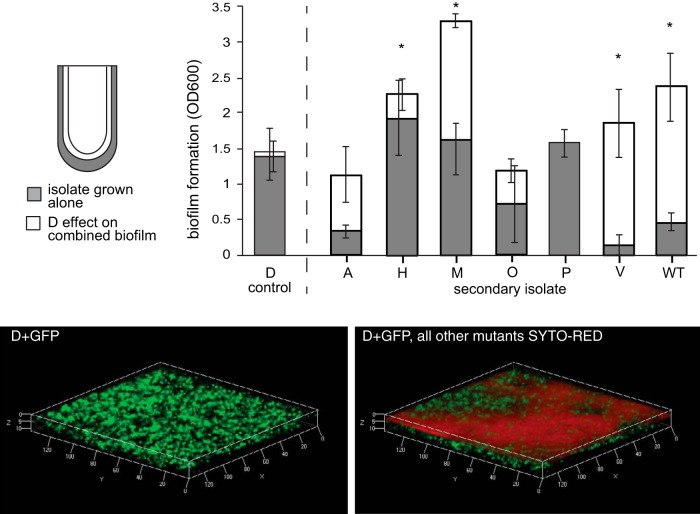FIG 4.
The early colonizing D type facilitates the attachment of other types and enhances biofilm output. (Top) Pairwise biofilm assays were conducted in which the D type was allowed to colonize a polystyrene surface for 4 h before the addition of a secondary isolate. Biofilm formation of individual members growing alone (gray) and the increase in total biofilm following D type colonization (dark gray) are shown. Asterisks signify combinations that are significantly more productive than both the member grown alone and D with more D added to control for greater cell density. (Bottom) Confocal microscopy of the constructed biofilm community inoculated simultaneously with D plus pMQ80-GFP (40) with induced GFP expression. The remainder of the cells were imaged after staining with the red Syto62 dye (Invitrogen). Left, only GFP-expressing cells are shown. Right, combined image of GFP and all red-stained cells attaching to the D type.

